For as slick as gaming has become – what with its photorealistic graphics, motion-captured animations and orchestral soundtracks – gameplay innovation has sure not kept pace with the advancements in presentation. Devs seem to have forgotten (or been pressured to neglect) the fact that – at the end of the day – it's not what a game looks like that counts: the ingenuity of its mechanics and amount of engagement they afford are what ultimately make a game fun (don't take my word for it — just ask Dwarf Fortress).
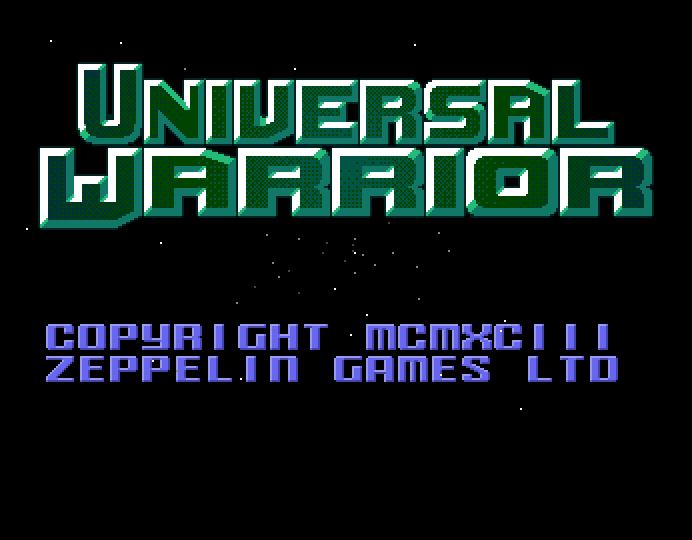
The most memorable games – not best-selling or award-winning, but ones that stick with you long after you move on to something else – are ones that offer an original spin on a stock formula. And though, on the face of it, Universal Warrior is "just" a multi-scrolling shooter, the amount of clever concepts it incorporated into such a small package (880 Kb on a single 3.5 inch floppy) make it enjoyable to this day, long after its 1993 debut.
The premise is simple: you create a company that owns a robot which runs the gauntlet of 40 levels to see if it can score better than other companies doing the same.
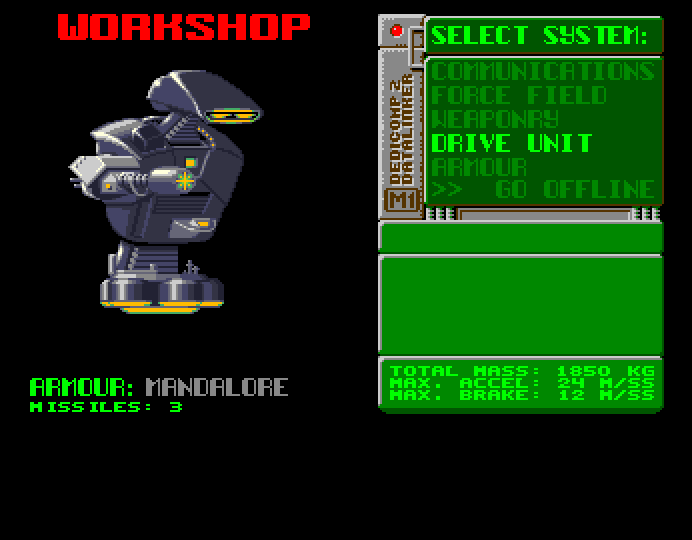
Your robot has five parts: the Drive Unit – which determines acceleration, braking and how much weight you can carry; Armour and Force Field – which decrease received damage by a fixed amount; a Weapon – which deals damage, yes, but also has a fire mode (semi/auto), rate of fire, dispersal, range and recoil; and a Communications suite which, uh- Okay, to be honest, I never figured out what Communications actually did. The anti-jamming stat seemed to have something to do with the static that would obscure the screen when you trundled by a light, but – other than that – one Comms package seemed to work as well as another...
Parts for your robot can be bought from three vendors: Big Al's – which sells used equipment, but also buys parts you no longer need; Sid's Taverna – your source for illegal "blackware" (more on that later) and questionable level "tips"; and glossy Meteor – the upmarket purveyors of brand new stock.
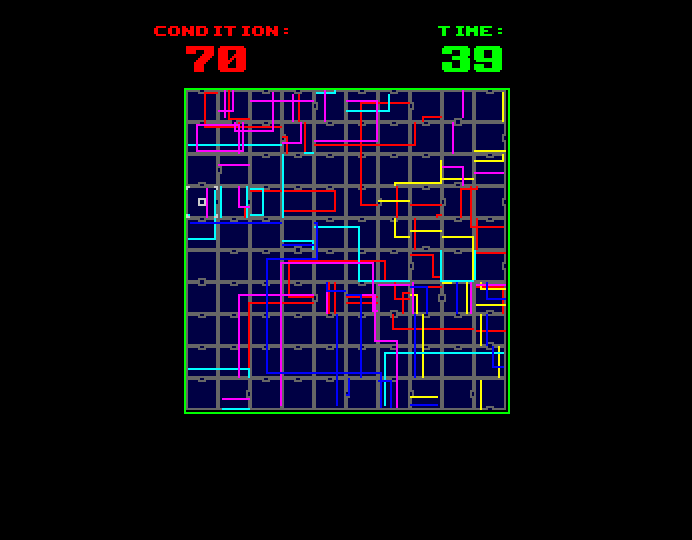
Robot components deteriorate with use and damage but can be fixed at Roy's Repairs, which offers two tiers of services: Automated Repair will return durability for a flat fee (so many Nu Yen per pecentile point); while Manual Repair – which is five times cheaper – sells seconds which then form your time limit to fix the component yourself via a 10x10 grid mini-game where you realign wiring.
Beyond the expense, damaged parts actually affect gameplay: damage your Weapon and you can no longer shoot; damage your Drive and you'll be rendered immobile (though, hilariously, if your weapon is working, you can still kinda propel yourself along using its recoil).
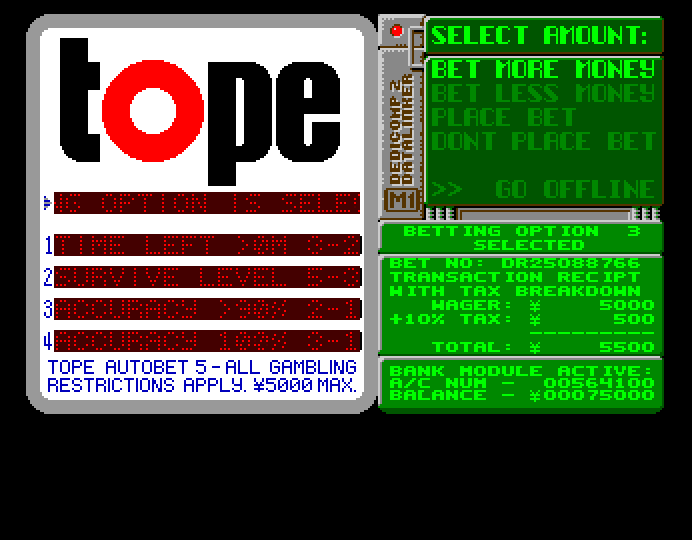
Two more locations round out the game's central hub: your Workshop, where you can install new robot parts; and Tope – which lets you place bets for a given level. And while the Workshop is straightforward, Tope really is a gamble — in the truest sense of the word. Some bets – like overall accuracy or time remaining when you finish a level – may be a matter of skill, but others – like killing 40 enemies on a level that has only eight – are more akin to a con.
Before tackling a level, you are given a chance to adjust your insurance policy, which is where those "blackware" parts come into play. The cost of replacing insured parts can be mitigated or covered, but Gornall & Gornall (the insurers) refuse to cover "blackware" components (which often have better stats than regular items).
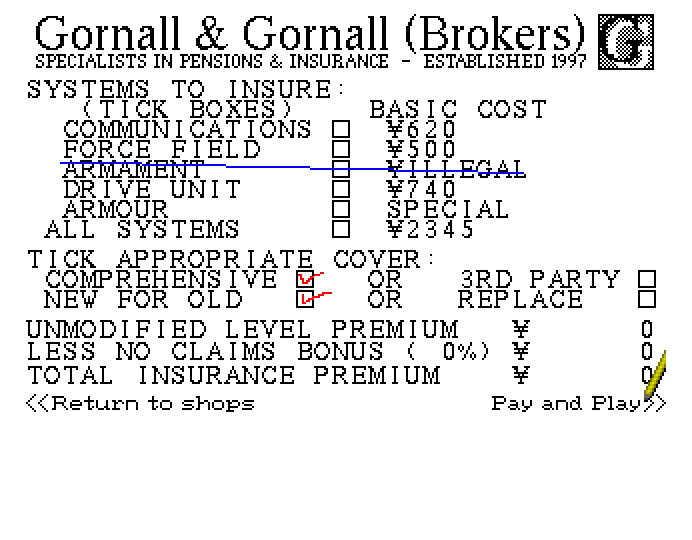
While Universal Warrior's bag of tricks isn't that deep, level design is thoughtful and original, with puzzles that depend in equal part on gameplay difficulty and robot design.
A robot with a hover Drive System may be fast, but it will be difficult to handle precisely (something you may regret on a level with a one-grid pathway next to a sheer drop); whereas a tracked Drive System tank will make it up the steepest incline without breaking a sweat and navigate tight corners like a pro – but probably not in time.
Between changes in elevation, movable blocks, tiles that propel you along, locked doors in need of keys, pitfalls and sheer drops, teleports and hidden secrets, each level of Universal Warrior throws enough of a new challenge your way to keep you entertained (or – given wrong robot componentry – frustrated in the best possible way). But the way the game is structured also leads to its few noticeable shortcomings.
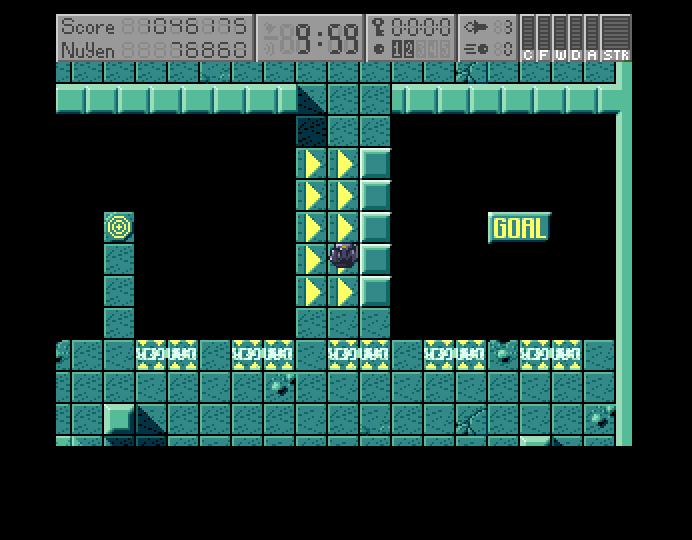
Since – other than Sid's obtuse "hints" – no other way to gauge a level's difficulty exists before you're actually in it, making sure you have the optimal robot build is mostly guesswork. Unlike Armored Core, whose robust AC-building mechanic balanced part shortcomings with strengths, Universal Warrior's parts really only have one statistic (weight) that can make a weaker part useful after you buy something better.
While a handful of weapons can contribute to a certain playstyle (like using a scattershot on a fast-moving robot to quickly clear rooms vs. using a single projectile weapon to cement accuracy); most are simply untenable (like one that fires in four directions at once that will sink your accuracy rating faster than a boat with no bottom or a "flamethrower" that is weak, short-ranged and needs you to stay still for the whole salvo to be remotely effective).
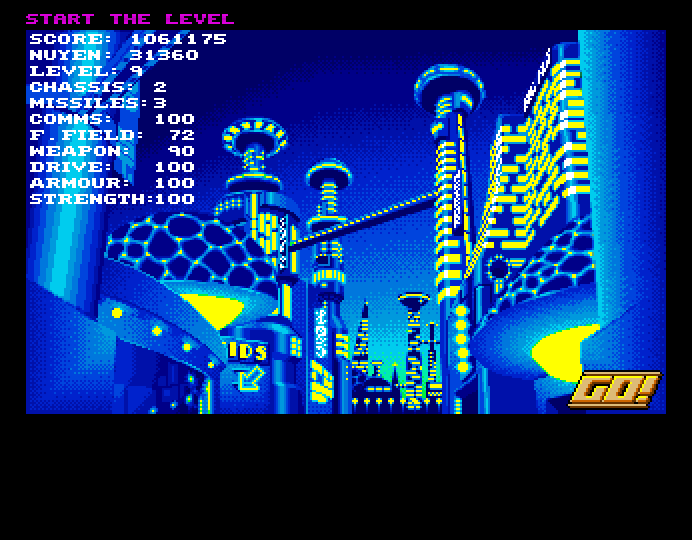
Lastly, while the game allows for multiple sequential players, there is no real incentive to be the first in line as you end up being the unwitting guinea pig for your competition. Since the 40 levels are handmade and static, the game also offers little incentive to play again once completed.
Then again, Armored Core was made by a fully-staffed studio, on a more powerful platform and four years later... Zeppelin Games (Universal Warrior's dev) was two twenty-something lads "(listening) to a lot of Rush and Metallica ... in a farmhouse near Aberdeen."
Plenty of prettier, better sounding games have come and gone since Universal Warrior made the rounds but few – if any – of 'em made a comparable impression. Between its unique concept, solid design and (admittedly dated) pop-culture spoofs (I'm fairly sure it's Bill and Ted shouting "excellent!" every time you clear a level); it remains a fun little game to spend time with.
